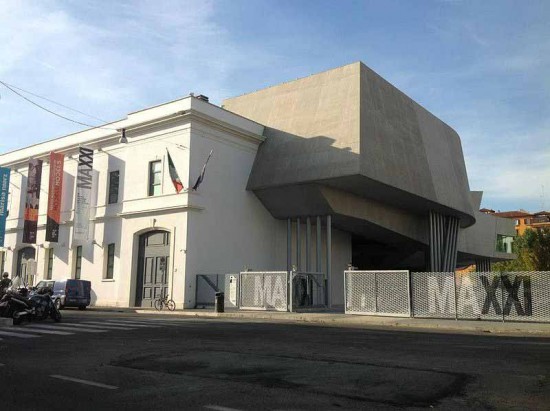
If you are art lovers, or simply enthusiasts, scholars or just interested in the artistic languages of the modern and contemporary era and whatever the reason for your stay in the capital, know that you are in the right city. Rome not only offers a vast cultural heritage of the ancient times, but it is also a major centre for the development and promotion of nineteenth and twentieth century art. The Eternal City offers endless possibilities for discovery and itineraries, ranging from the testimonies of its ancient origins to the present day. An interesting trail to explore the Rome you don’t expect is one which weaves its way among the main cultural sites lof modern art, each with its permanent collections and its temporary exhibitions. Let’s take a look at the following list.
- Gallery of Modern Art of Roma Capital. This institution, founded in 1925, is located in Via Crispi and was created in the aim of collecting evidence related to the Roman environment. Painting, sculpture, drawing and etching are some of the expressive forms adopted by the artists present in a collection that claims more than three thousand pieces. The oldest pieces date from the late nineteenth century and recount a piece of Italian history. Severini, Morandi, Capogrossi, De Chirico, Carrà, Manzù are just a few of the artists that we have the fortune to enjoy inside this museum. Works of art related to various contemporary movements like the “divisionism” or the “Roman School” can be enjoyed here. The building that houses the collection is a monastery of the XVI century, once belonging to the order of the Discalced Carmelites, located in the city centre and a short walk from Trinità dei Monti.
- GNAM. The National Gallery of Modern and Contemporary Art. This museum houses the largest collection of contemporary art of our country. Here we find paintings and sculptures, prints and drawings dating back to the nineteenth and twentieth centuries. The museum complex consists of 55 rooms, where you can admire the works of Fattori, Dupré, Lega, De Nittis, Degas, Cezanne, Van Gogh, Mondrian, Duchamp, Ernst, Arp. In other words, GNAM is a truly a chest filled with modern and contemporary art treasures.
- MACRO. The Museum of Contemporary Art of Rome. This museum presents a very original architectural structure as it was born from the recovery of previously industrial areas: the old Peroni plant, up to the 70s an active brewing centre, and the former slaughterhouse in Testaccio, dating from the end of the nineteenth century. MACRO has only lately become a promotional centre for contemporary art and cultural events related to the experimental art forms of the twentieth century. From an historical point of view, these buildings are an example of industrial archaeology and proof of how it is possible to culturally readapt structures that were once built for different purposes. Especially MACRO Testaccio, which, rising in an area highly populated by young people, keeps its doors open until midnight. The headquarters of this institution are found near Porta Pia and they were designed by French architect Odile Decq.
- MAXXI. MAXXI rises in n Rome’s Flaminio district. It was created with the intention of becoming a centre of aggregation for contemporary art. To enrich the museum’s offer in addition to all the exhibitions, you will find also many studios, workshops and conferences. From an architectural point of view, we are marvelled by the aesthetic forms of the structure designed by Zaha Hadid and inaugurated in 2010. The collection is divided into two areas: art and architecture. Worthy of being pointed out are the works of Alighiero Boetti, Kara Walker, Marlene Dumas, Anish Kapoor, Francesco Clemente, Vanessa Beecroft and Luigi Ghirri.



